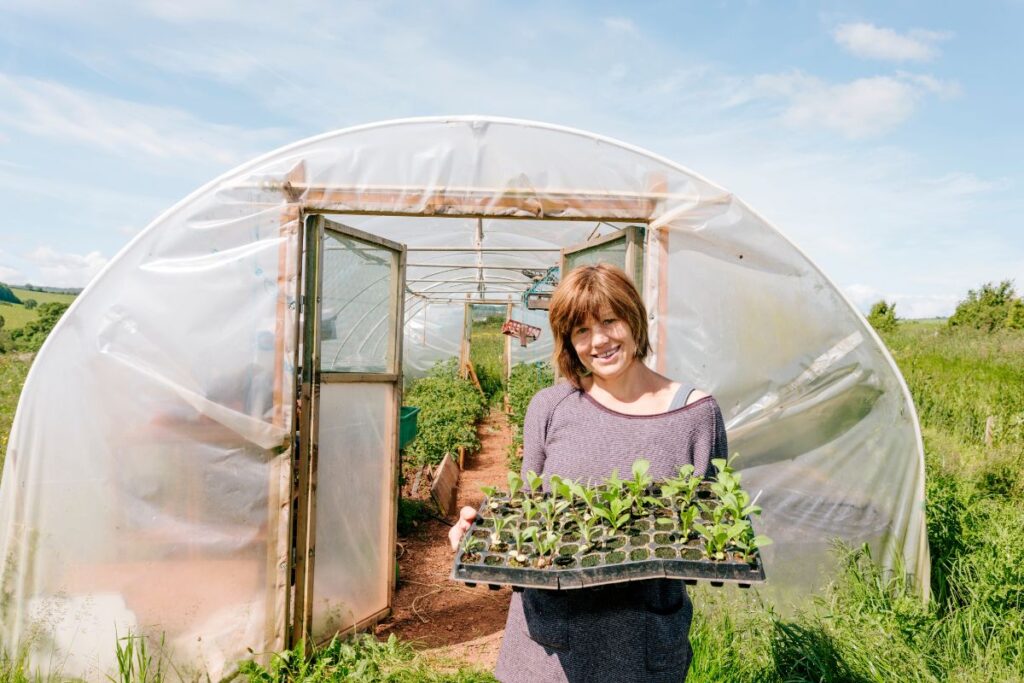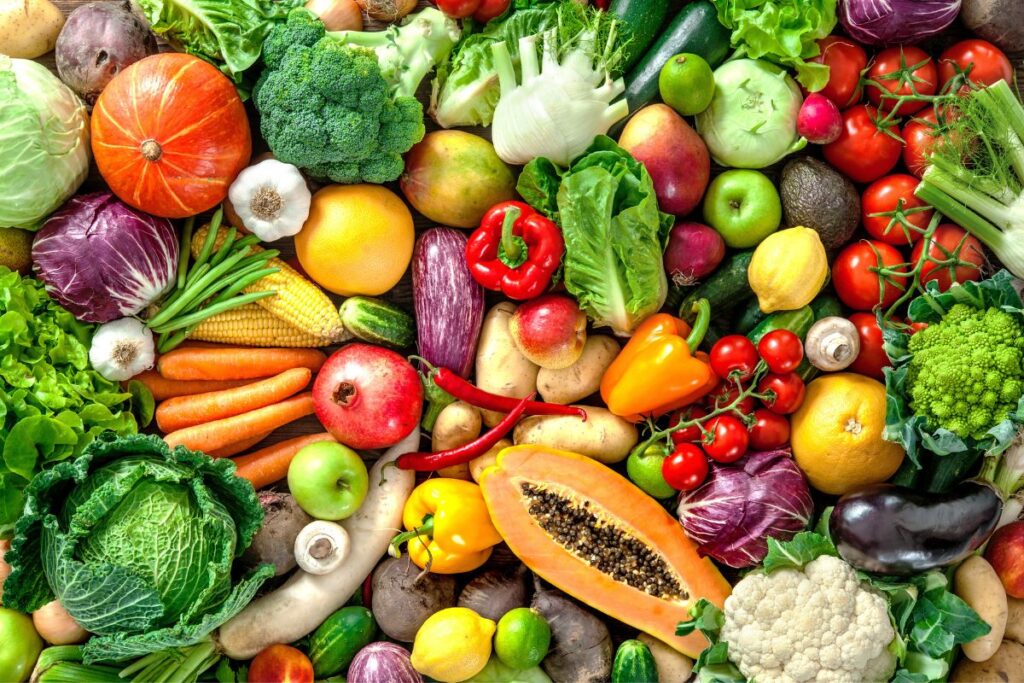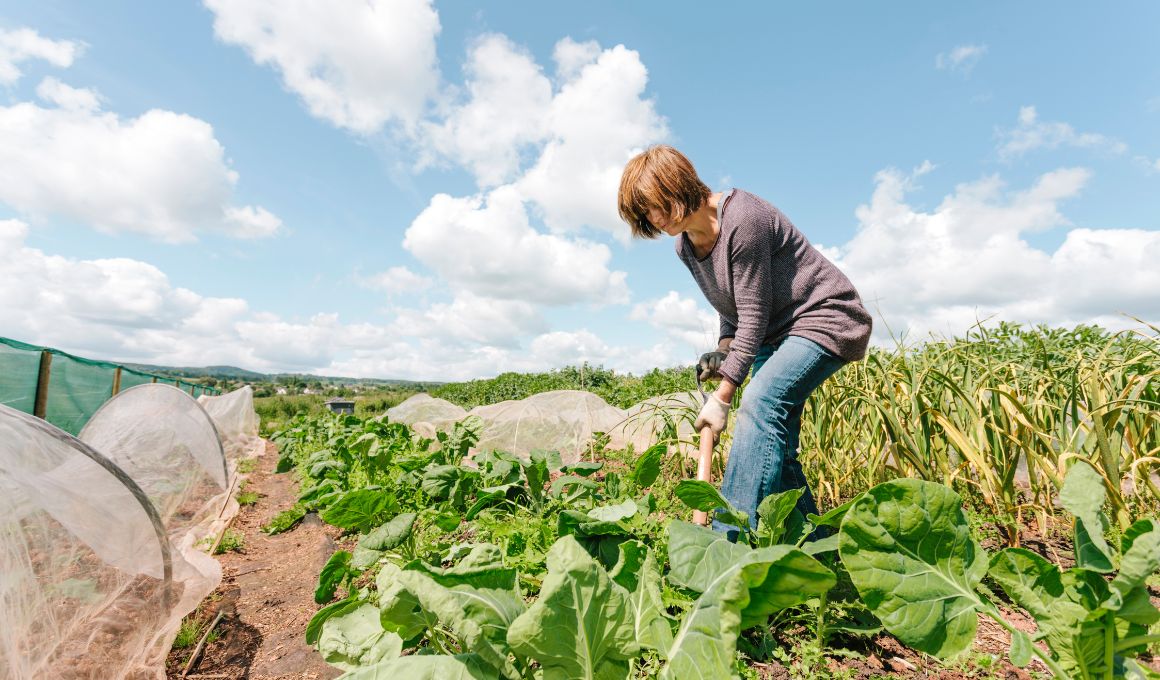Calling all gardeners! Have you ever wondered what it takes to become a market gardener? Curious about the ins and outs of marketing gardening? Well, you’re in luck!
In this article, we’re diving deep into the world of market gardening. From understanding the role of a market gardener to exploring the diverse range of crops they produce, we’ll cover it all. Get ready to discover the importance, advantages, and even a few examples of market gardening.
So, grab your gardening gloves and join us on this green-thumb adventure as we unravel the secrets of what it truly means to be a market gardener.
What Is a Market Gardener?
A market gardener is an individual or a small-scale farmer who specializes in the cultivation of high-quality, diverse crops for direct sale to consumers. Market gardeners typically employ sustainable and environmentally friendly farming practices to produce fresh, locally grown produce.
They play a vital role in creating resilient and sustainable food systems by bridging the gap between farmers and consumers.

Market gardeners are deeply involved in all aspects of the farming process, from seed selection and soil preparation to crop cultivation, harvesting, and direct marketing. They often prioritize the quality and flavor of their produce, ensuring that consumers have access to fresh, nutrient-rich, and flavorful fruits, vegetables, herbs, and flowers.
The Role of a Market Gardener

Now that we have a general understanding of what market gardening entails, let’s dive deeper into the role of a market gardener. Being a market gardener is much more than simply planting seeds and harvesting crops. It requires a unique set of skills, knowledge, and a genuine passion for growing food and connecting with the local community.
Cultivating and Managing Crops
At the core of a market gardener’s work is the cultivation and management of crops. From carefully selecting and sourcing seeds to nurturing seedlings, transplanting, watering, and tending to the plants, market gardeners are responsible for every stage of the growing process.
They must closely monitor the health of the crops, identify and address any pests or diseases, and ensure optimal growing conditions to maximize the yield and quality of the produce.
Harvesting and Post-Harvest Handling
One of the most satisfying aspects of being a market gardener is harvesting the fruits of your labor. Market gardeners need to have a keen eye for knowing when crops are ready for harvest, as different plants have varying signs of ripeness.
After harvesting, they must handle the produce with care to maintain its freshness and quality. This involves proper cleaning, sorting, packaging, and storing techniques, ensuring that the product is market-ready and appealing to customers.
Marketing and Sales
As the name suggests, market gardeners have a strong connection with the market. They actively participate in local farmers’ markets, set up stands or stalls, and engage with customers to sell their fresh produce.
Effective marketing is crucial for attracting customers, and market gardeners often employ various strategies, such as creating eye-catching displays, offering samples, and educating consumers about the benefits of buying local, organic produce.
Building relationships with customers and establishing a loyal customer base are also key aspects of a market gardener’s role.
Community Engagement and Education
Market gardeners play an important role in fostering community engagement and promoting sustainable food systems.
They often organize farm tours, workshops, and educational events to raise awareness about the benefits of local, organic farming and the importance of supporting small-scale agriculture.
By actively engaging with the community, market gardeners not only create a sense of connection but also inspire and empower individuals to make informed choices about their food consumption.
Related Reading:
- How to Get Started with Gardening?
- An Overview of Cucurbitaceae Family
- Snake Plant – A Growing, Types, Benefits Guide
What is Market Gardening?
Market gardening, also known as truck farming, refers to the practice of growing and selling fruits, vegetables, herbs, and flowers directly to consumers, typically through local markets, farmers’ markets, and community-supported agriculture (CSA) programs.

Unlike large-scale commercial agriculture, market gardening involves cultivating crops on a smaller scale, often utilizing intensive and sustainable farming methods.
Sustainable Farming Methods
Market gardeners often employ sustainable farming methods to minimize their environmental impact and maximize the quality and yield of their crops. These methods include organic farming practices, permaculture principles, companion planting, crop rotation, the use of natural fertilizers, and pest control techniques.
By adopting sustainable practices, market gardeners strive to protect the health of the soil, enhance biodiversity, and provide consumers with nutritious and chemical-free produce.
What Does Market Gardening Produce?

Market gardening is a versatile agricultural practice that produces a wide range of crops, including:
1. Fruits
Market gardeners often cultivate various fruits, such as strawberries, blueberries, raspberries, apples, peaches, and citrus fruits. These fresh and flavorful fruits are a popular choice among consumers and are a staple at farmers’ markets and local produce stands.
2. Vegetables
A diverse array of vegetables is grown through market gardening. From leafy greens like lettuce, spinach, and kale to root vegetables such as carrots, radishes, and potatoes, market gardeners supply their communities with an abundance of fresh, nutritious produce.
3. Herbs
Market gardeners are known for their vibrant herb offerings. Commonly grown herbs include basil, cilantro, parsley, mint, thyme, and rosemary. These aromatic and flavorful herbs are valued for their culinary uses and are in high demand among chefs and home cooks alike.
4. Flowers
Beyond food crops, market gardeners often cultivate beautiful flowers, which add a touch of color and elegance to farmers’ markets and bouquets. Popular flower varieties grown by market gardeners include sunflowers, zinnias, marigolds, roses, and lavender.
5. Specialty Crops
Market gardeners may also focus on growing specialty crops that cater to niche markets. Examples include heirloom tomatoes, unique varieties of peppers, gourmet mushrooms, microgreens, and edible flowers.
These specialty crops command higher prices and cater to discerning consumers who appreciate their distinct flavors and characteristics.
Related Reading:
- Discovering the Majesty of Tropical Plants: A Guide to Growing Tropical Plants and Care
- A Comprehensive Guide to the Different Types of Evergreen Trees
- How to Grow Tomatoes – The step-by-step Guide from Seeds to Harvest
- How To Grow Lemon Cucumber Plant In Your Vegetable Garden?
Importance of Market Gardening

Market gardening plays a vital role in our society, offering several important benefits:
Here are some benefits of market gardening.
1. Local Food Production
By practicing market gardening, communities can have access to fresh, locally grown food. This reduces the reliance on long-distance transportation and supports sustainable food systems. Consumers can enjoy produce at its peak freshness, flavor, and nutritional value.
2. Environmental Stewardship
Market gardeners often employ sustainable farming practices, such as organic methods and permaculture principles. These approaches prioritize soil health, biodiversity, and natural resource conservation.
By reducing chemical inputs and promoting ecological balance, market gardening contributes to a healthier environment.
3. Economic Opportunities
Market gardening provides economic opportunities for individuals and small-scale farmers. It allows them to start their own businesses, generate income, and contribute to the local economy.
By creating direct-to-consumer sales channels, market gardeners can retain a larger portion of the profits compared to traditional agricultural models.
4. Community Engagement
Market gardeners play an active role in their communities. They interact directly with consumers, fostering personal connections and building trust.
Through farmers’ markets, CSA programs, and educational events, market gardeners promote community engagement, educate consumers about sustainable food practices, and contribute to a sense of local pride.
How can market gardeners extend the growing season?
Extending the growing season is a common practice among market gardeners, especially in regions with shorter growing seasons. They achieve this by utilizing various techniques, such as:
- Greenhouses and High Tunnels: These structures provide controlled environments for growing crops, protecting them from harsh weather conditions and extending the growing season.
- Season Extension Techniques: Market gardeners use row covers, cold frames, and mulching to create microclimates that allow for earlier planting and later harvesting.
- Succession Planting: Market gardeners can ensure a continuous supply of fresh produce throughout the season by staggering their plantings and sowing new crops as others are harvested.
Market Gardening Advantages and Disadvantages
Market gardening, like any agricultural practice, has its advantages and disadvantages. Let’s explore them in more detail:
Advantages of Market Gardening
- Direct-to-Consumer Sales: Market gardeners can sell their produce directly to consumers, eliminating intermediaries and maximizing profits.
- Quality and Flavor: Freshly harvested produce from market gardens often exhibits superior taste, texture, and nutritional value compared to mass-produced alternatives.
- Environmental Sustainability: Market gardeners prioritize sustainable farming practices, reducing the environmental impact of food production and promoting biodiversity.
- Local Economic Impact: Market gardening contributes to the local economy by creating jobs, supporting small-scale farmers, and keeping money within the community.
- Community Connection: Market gardeners engage with the community, fostering relationships, and educating consumers about sustainable food choices.
Disadvantages of Market Gardening
- Labor-Intensive: Market gardening requires significant manual labor for planting, harvesting, and post-harvest handling, which can be physically demanding.
- Weather Risks: Market gardeners are vulnerable to weather fluctuations, including droughts, frosts, storms, and heat waves, which can impact crop yields and profitability.
- Market Uncertainty: The success of market gardening is influenced by consumer demand, market trends, and competition, making it subject to economic fluctuations.
- Initial Investment: Setting up a market garden can require a substantial initial investment in land, infrastructure, equipment, and seeds.
- Time and Expertise: Market gardening demands knowledge and expertise in various areas, including crop management, marketing, and business operations, which may require time and continuous learning.
Despite the challenges, market gardening continues to thrive due to its numerous benefits and the increasing consumer demand for locally sourced, sustainable produce.
What Are Some Market Gardening Examples?
Market gardening can take many forms and adapt to various contexts. Here are a few examples of market gardening practices around the world:
1. Urban Rooftop Gardens
In densely populated cities, market gardeners utilize rooftops to grow crops. These innovative gardens make use of vertical space and employ container gardening techniques. Urban rooftop gardens provide fresh produce to urban dwellers, promote green spaces, and enhance food security in urban environments.
2. Community Gardens
Community gardens are collaborative efforts where individuals or groups come together to grow food collectively. Market gardeners in community gardens cultivate crops on shared plots, fostering a sense of community, promoting urban agriculture, and enabling access to fresh produce in underserved areas.
3. Organic Farms
Many market gardeners prioritize organic farming practices, emphasizing natural soil fertility, biological pest control, and ecological sustainability. Organic market gardens produce crops without synthetic chemicals, providing consumers with pesticide-free and environmentally friendly food options.
4. Farm-to-Table Initiatives
Some market gardeners focus on supplying fresh produce directly to local restaurants and farm-to-table establishments. By establishing strong relationships with chefs and culinary professionals, these market gardeners play a crucial role in supporting the local food movement and ensuring a sustainable supply of high-quality ingredients.
5. Specialty Crop Growers
Market gardeners who specialize in unique crops cater to niche markets. For example, some market gardeners focus on growing medicinal herbs, exotic fruits, or heirloom vegetables. These specialized crops command premium prices and cater to consumers with specific dietary preferences or culinary interests.
How can one start a career in market gardening? OR How can you become Market Gardener?

Starting a career in market gardening requires a combination of practical experience, knowledge, and a strong entrepreneurial spirit. Here are a few steps to get started:
- Gain hands-on experience: Work on a farm or volunteer with experienced market gardeners to learn the fundamentals of crop cultivation, harvesting, and sales.
- Research and educate yourself: Read books, attend workshops, and explore online resources to deepen your understanding of sustainable farming practices, business management, and marketing strategies.
- Develop a business plan: Define your goals, identify your target market, assess your financial resources, and create a comprehensive business plan that outlines your production methods, marketing strategies, and financial projections.
- Start small and scale up: Begin with a small plot of land or even a backyard garden to test your ideas and refine your techniques. As you gain experience and establish a customer base, you can gradually expand your operations.
Related Reading:
- How To Grow Pumpkins In A Limited Space?
- Can We Grow Zucchini And Eggplant Together?
- The Ultimate Guide To Growing Carrots In Your Garden
- Growing Brinjal at Home: A Complete Guide
Conclusion
In short, market gardening is a rewarding and dynamic profession that offers numerous benefits to both growers and consumers. From cultivating and managing crops to marketing and sales, market gardeners wear many hats and play a vital role in creating sustainable food systems.
By connecting with local communities, educating consumers, and producing high-quality, fresh produce, market gardeners contribute to a healthier and more resilient food future.
So, if you have a passion for growing food, connecting with nature, and making a positive impact, why not explore the path of becoming a market gardener?
FAQs About Market Gardening & Market Gardener
Here are some FAQs about market gardening and market gardener.
How much land is required for market gardening?
The land requirements for market gardening can vary depending on various factors, such as the specific crops grown, farming techniques used, and market demand.
While some market gardeners operate on small plots of land, such as urban gardens or backyard spaces, others may work on several acres of land.
The key is to maximize the productivity of the available land through efficient planning, crop rotation, and intensive cultivation methods.
Can market gardening be profitable?
Yes, market gardening can be a profitable venture. However, it requires careful planning, efficient management, and a thorough understanding of the local market dynamics. Successful market gardeners often diversify their crops, focus on high-value specialty produce, and build strong relationships with customers.
Additionally, direct-to-consumer sales channels, such as farmers’ markets and CSA programs, can help increase profit margins by eliminating intermediaries and connecting growers directly with consumers.
Are there any risks or challenges in market gardening?
Like any agricultural endeavor, market gardening comes with its fair share of risks and challenges. These can include unpredictable weather events, pest and disease outbreaks, labor-intensive work, and market fluctuations.
However, market gardeners mitigate these challenges through careful planning, diversification of crops, implementing sustainable farming practices, and staying informed about the latest farming techniques and technologies.

